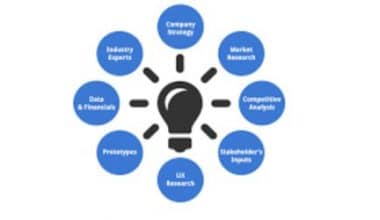Their primary function is to handle sales, but the best POS systems have additional uses. They provide software features that help you work more efficiently, like the ability to schedule workers, implement a loyalty program, and keep track of inventories all from a single interface. However, it might be difficult to know which option is ideal for your situation. In this article, we will be looking at the best POS system for small business.
Best POS System for Small Business
A point-of-sale system, or POS system, is a set of hardware and software that controls transactions. This could involve maintaining inventory, tracking consumer data, or advertising a product. An all-in-one solution could be as basic as a card reader or as complex as a point-of-sale (POS) system, which could be as basic as a card reader and include capabilities like e-commerce, customer relationship management (CRM), scheduling, loyalty, and front-of-house.
Businesses of all sizes employ POS systems in a range of sectors, including retail, dining, hospitality, and services. A POS system is unquestionably a terrific choice for you if the success of your business depends on transactions of any kind.
How to Choose a POS System For Small Business: What to Consider
If a POS system doesn’t have the features and functionalities your company will need in the future, you shouldn’t choose it. Using a POS system should make accepting payments easy and economical, regardless of where you sell or how your consumers pay. Consider the wider picture in terms of pricing as well. Depending on your sales volume, using a POS system that has a higher monthly cost but lower transaction costs may or may not be viable.
According to this analysis of several data points about POS system for small business, are:
#1. Square
Because of its low cost, mobile friendliness, and POS solutions for retailers, restaurants, and service organizations, Square is the ideal POS system for the majority of small businesses. All the functionality required for a single location as well as an online shop platform is included in the free membership for each of Square’s POS systems, including Retail, Restaurants, and Appointments. There are premium expansion options available as well, which range in price from $29 to $60 each month.
This user-friendly tool stands out from other point-of-sale systems thanks to its possibilities for retail, restaurants, and appointments. Additionally, it was famous for its aggressive pricing strategy. There were just three issues with Square: there was no custom reporting, there was no ingredient level tracking, and there was not enough customer service.
#2. Shopify
To begin, you must first create a Shopify ecommerce account. Shopify POS may be of interest to retailers that already use Shopify for their online store or who want to sell both online and offline. The question then becomes whether you spend more money on more expensive POS options or make advantage of the readily available, free POS features. The organizational structure of Shopify supports its standing as a pioneer in e-commerce solutions. It has an e-commerce platform and a reliable social network selling connections.
Shopify and Lightspeed Retail, the top two POS systems, are tied for second position with Square. Because of its register features, which include a configurable checkout interface, a variety of payment choices, and offline sales, this POS outperformed the others on our list.
The pricing structure of Shopify POS was the main issue. A Shopify POS subscription may cost you between $29 and $299. However, in order to use the most advanced POS features (smart inventory management, in-depth reporting, staff access), you must pay an additional $89 a month for POS Pro. Costs could consequently rapidly increase.
#3. Toast
Toast is a powerful cloud-based point-of-sale system created especially for the restaurant sector. Small restaurants can start utilizing Toast’s service without paying anything upfront and can expand their POS presence as their businesses develop thanks to the company’s free starting POS and pay-as-you-go hardware choices. The breadth of Toast’s online ordering, delivery management, marketing, and staff management tools will also feel supportive to enterprise-level establishments.
For a system that solely benefits eateries, Toast is actually pretty good. Toast has received praise for its competitive pricing and broad POS capabilities, which include personnel and tip pool management. The main cause of its issues is that many of its tools require more expensive subscriptions or processing fees in order to use them. The two-year commitment requirement and specific hardware requirements were other problems with Toast.
#4. Vend
Vend is the finest point-of-sale system for businesses that need to manage inventory not only across stores but also at warehouse sites because it was designed specifically for brick-and-mortar retailers. Whether your inventory is in a store, warehouse, or storage area, you can specify where it is. The inventory will then be tracked and synced by the application as it moves or is sold. Vend is thus ideal for businesses with both warehouse locations and a desire to control inventory at the point of sale.
It is praised for its flexible payment options, exceptional usability, and round-the-clock customer service. Businesses particularly valued the system’s built-in store credit, layaway options, offline processing, and connectivity to other payment processors so they could compare costs. Vend’s shortcomings included its high price, the absence of an e-commerce platform and email marketing capabilities, and its limited options for staff management and basic reporting.
#5. TouchBistro
Like its rival, Toast, TouchBistro is a highly user-friendly iPad-based point-of-sale system created exclusively for pubs and restaurants. Unlike Toast and Square, TouchBistro supports a variety of payment processors, giving businesses the option to either stick with their current processor when moving to TouchBistro or shop around for the most affordable processing rates.
TouchBistro is a fantastic option for small eateries, coffee shops, and food trucks because of this differentiation and its mobile reporting features, which Toast lacks.
TouchBistro POS received praise for being simple to use, reasonably priced, and offering quick customer service. It is compatible with iPads and can be installed independently. This program is the only one on our list whose user interface most closely mimics that of iOS as a whole. As a result, you (or your team) will be able to use TouchBistro right away if you’ve ever used an iPhone. Because of its onerous contract requirements and time-consuming inventory management, the judges gave Touchbistro a low rating
#6. Lightspeed
For restaurants, golf courses, and stores, Lightspeed provides POS systems. It uses iPads for mobile use and is renowned for its excellent inventory management abilities. Lightspeed makes it possible to monitor products from your POS dashboard and to manage matrix product assortments, variants, linked product catalogs, vendor administration, and real-time product addition. Lightspeed is the finest POS for stores with large or complicated inventory assortments due to these and other special features.
The final scores for Lightspeed and Shopify POS were both 4.47. Despite being expensive, this cloud-based system received high marks for its powerful shop management features and offline functionality. Like Square, Lightspeed offers distinctive POS options for restaurants and retail establishments. Both products are dependable and offer solid inventory management capabilities.
#7. IT Retail
Supermarkets created the effective POS system IT Retail largely to serve small grocery stores. The system has all the essential hard hardware for a grocery store setting, as well as bottle deposit management, automatic rewards, a scale connection for selling goods by weight, and self-checkout options. IT Retail also offers online ordering and delivery services through e-commerce platforms like Mercato and Instacart. In addition, FutureProof’s contactless mobile self-checkout system is among the devices that the software is compatible with.
It was praised for supporting a large number of payment processors and having a comprehensive set of inventory features, but it was criticized for having a starting price of $99 plus additional hardware costs. Another problem with this company was the absence of features like mobile compatibility, a rewards program with its base account, and marketing tools.
What POS System Do Most Retailers Use?
The best system of POS for both small and big retail business include the following:
- Shopify POS.
- Square Point of Sale.
- Lightspeed Retail.
- Heartland Retail.
- Stripe Terminal.
- QuickBooks Point of Sale.
- Clover.
- Square for Retail.
What Are the Disadvantages of POS System?
The drawbacks of software-based point-of-sale systems
- High-cost software upgrades.
- Reduced Convenience.
- Hardware Issues: Problems.
- Connection Dependability.
- Charges for Security Risk.
- Security hazards.
Do All POS Systems Require a Monthly Fee?
POS software can be purchased once and be free to use or it might have monthly subscription fees. For mobile card readers, store register systems, and other payment devices, hardware expenditures are often one-time expenses. Each time you process a credit card or debit card, you will be charged recurring fees.
What Are the Types of POS Systems?
Modern POS systems are available in a wide range of configurations, from straightforward card readers to all-in-one options. The optimal point-of-sale system for your company will depend on its particular requirements. The various types that you might run into are outlined below.
#1. Restaurant POS systems
A restaurant POS system is a type of POS designed specifically for restaurants. These systems usually include kitchen display systems, internet ordering, and table management. Most will also have inventory control, allowing you to restock items automatically when they run out of stock. Even POS systems can be found with functions perfect for running bars.
#2. Retail POS
A point-of-sale system that is designed exclusively for retail businesses is one option. These systems usually contain components like gift cards, inventory management, and customer loyalty programs. A few retail point-of-sale systems additionally provide reporting and appointment booking.
#3. iPad POS
An iPad serves as the primary point-of-sale terminal for an iPad POS system, a form of mobile POS system. Because they are portable and simple to use, these systems are gaining popularity. There are many iPad point-of-sale (POS) options available that have integrated capabilities including credit card processing, scheduling, and receipt printing.
#4. Mobile POS
One kind of POS system that may be utilized on a mobile device, like a smartphone or tablet, is a mobile POS system. Due of their portability and ease of use, people are relying on these technologies more and more. Several mobile point-of-sale devices are currently on the market that can process credit cards, keep track of inventory, and print receipts.
#5. Android POS
A mobile point-of-sale system known as an “Android POS” employs an Android phone as its primary point-of-sale terminal. The portability and user-friendly design of these devices contribute to their rising popularity. Receipt printing, barcode scanning, and credit card processing are features that are offered by the majority of Android point-of-sale systems.
#6. Cloud POS.
A POS system that is hosted in the cloud is known as a cloud POS system. This implies that all of your data is stored online and is accessible from anywhere. Since they require less setup and maintenance than conventional POS systems, cloud POS solutions are becoming more and more popular. They frequently include features like gift cards, customer loyalty programs, and inventory management.
#7. POS Terminal
Businesses that need to accept credit and debit card payments commonly utilize POS terminals. PCI compliance, EMV compliance, and fraud prevention measures are typically seen on these terminals.
What Does a POS System Include?
A typical retail point-of-sale system contains a cash register, which nowadays typically consists of a computer, monitor, cash drawer, receipt printer, customer display, and barcode scanner. The majority of retail POS systems now incorporate a debit/credit card reader.
What Are the Expected Costs of a POS System for a Small Business?
For cloud-based systems, POS software expenses can range from $0 to more than $200 per month, or for legacy systems, they can be a one-time expense starting at about $1000. A basic card reader costs zero dollars, but a full retail register costs more than $1200.
What Is a Point of Sale System?
Your company can collect consumer payments and monitor sales with a POS system. Although it seems straightforward, the setup can differ based on whether you sell online only, have a physical presence, or both. a term for the cash register at a store’s point of sale.
Related Article
- Bar Management Software: Top Best 9+ Bar & POS Options in 2023
- The 19+ Best POINT OF SALE SYSTEMS FOR SMALL BUSINESS in 2022 (Updated)
- 2023 Best POS SYSTEMS FOR SMALL BUSINESS, Updated!
- RESTAURANT MANAGEMENT SYSTEM: Guide to Effective Restaurant Management






